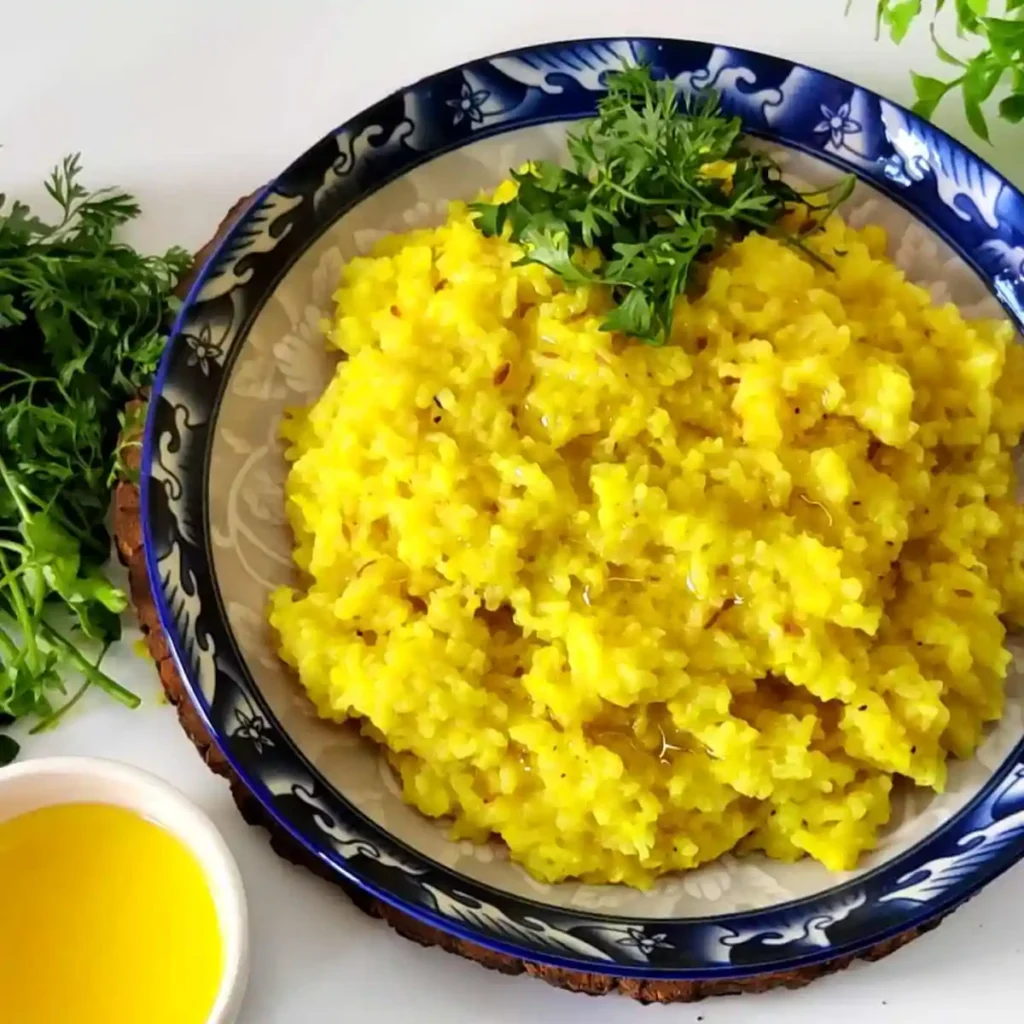Kitchari is a traditional Ayurvedic dish used for gentle detoxification and recovery. It's easily digestible, nutritious, and helps detoxify the body. This makes it perfect for spring, when our bodies want to rid themselves of accumulated toxins. kapha energy and waste materials (ama).

Why kitchari?
It supports digestion and gently cleanses the body. It also contains an ideal balance of proteins, carbohydrates, and fats. It's also very easy to make, versatile, and wonderfully warming.
Ingredients (for 2-3 portions)
- 100 g split mung beans (soaked for a few hours and rinsed)
- 100 g basmati rice
- 1 tsp ghee (warming) or coconut oil (cooling)
- 1 tsp cumin seeds
- 1 tsp coriander powder
- 1/2 tsp turmeric powder
- 1/2 tsp ginger powder (or freshly grated ginger)
- 1/2 tsp fenugreek seeds (optional, good for digestion)
- 1 liter of water
- Salt to taste
- Fresh coriander or parsley for garnish
Preparation method
- Rinse the mung beans and rice well until the water runs clear.
- Heat the ghee in a pan and add the cumin seeds. Cook briefly until fragrant.
- Add the remaining spices and stir briefly.
- Add the mung beans, rice, and water. Bring to a boil and then simmer over low heat for about 30 minutes, until tender.
- Stir regularly and add more water if necessary for a smoother texture.
- Season with salt and garnish with fresh coriander or parsley.
How to use kitchari in a spring detox
- Eat kitchari for 1 to 3 days as a mono diet to give your digestion a rest and release toxins.
- Also drink plenty of warm water or herbal tea to support cleansing.
- Combine this with gentle yoga, meditation and breathing exercises for a complete Ayurvedic reset.
Want more Ayurvedic tips and recipes? Subscribe to our newsletter or book an Ayurvedic consultation for personalized advice!
